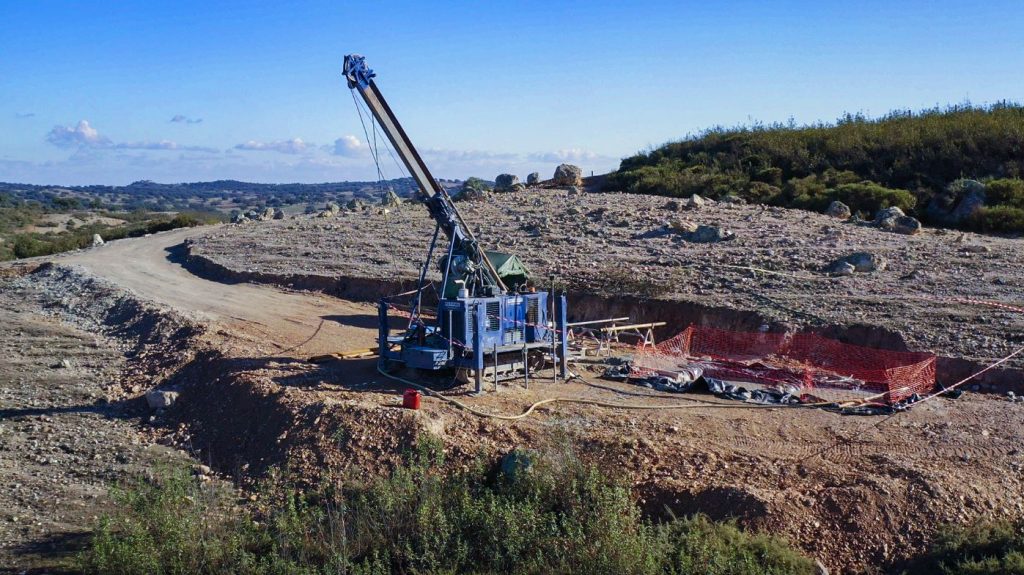Emerita Resources reports more drill results from Iberian Belt West, Spain

Emerita Resources Corp. [EMO-TSXV; EMOTF-OTCQB; LLIA-FSE] reported additional assay results from the continuing 2022 to 2023 delineation drilling program at La Romanera deposit, part of Emerita’s wholly owned Iberian Belt West project (IBW), Spain. Assays from an additional 14 drill holes have been received. IBW hosts three previously identified massive sulphide deposits: La Infanta, La Romanera and El Cura. All deposits are open for expansion along strike and at depth.
Assays are reported for the following 14 drill holes (LR022, LR027, LR031, LR036, LR039, LR048, LR055, LR063, LR068, LR070, LR072, LR099, LR110 and LR120) at La Romanera deposit.
The 14 drill holes are broadly distributed, in the upper and central parts of the deposit, and on the edges of the known mineralization between positive 50- and minus-300-metre elevation. Work has begun on the initial NI 43-101 mineral resource estimate.
According to Ian Parkinson, executive vice-president of corporate development for Emerita: “Our team is excited to reach this milestone and start the process of putting together this interim mineral resource estimate. Drilling will continue to expand the resources; however, we are confident that we have delineated sufficient mineralization with a tight enough drill spacing to support a robust and significant mineral resource estimate. Metallurgical sampling is expected to commence during the resource estimation phase.”
The company recently surpassed 70,000 metres of drilling on the IBW project, approximately 78% at La Romanera deposit and 22% at La Infanta deposit. Drilling continues with 15 rigs. The following holes are expected to exceed the cut-off grade and be included in the resource estimate.
Drill hole LR036: The Upper lens was intersected at 297.5 metres down the hole and comprises 2.8 metres of polymetallic mineralization grading 0.4% copper, 2.2% lead, 5.8% zinc, 2.0 g/t gold and 117.5 g/t silver. The Lower lens was intersected at 302.5 metres down the hole and comprises 15.0 metres of polymetallic mineralization grading 0.3% Cu, 0.9% Pb, 2.2% Zn, 1.0 g/t Au and 30.8 g/t Ag.
Drill hole LR048: The Upper lens was intersected at 200.4 metres down the hole and comprises 13.1 metres of polymetallic mineralization grading 0.2% Cu, 1.5% Pb, 6.4% Zn, 1.2 g/t Au and 83.8 g/t Ag. The Lower lens was intersected at 212.6 metres down the hole and comprises 13.1 metres of polymetallic mineralization grading 0.3% Cu, 1.1% Pb, 4.9% Zn, 1.1 g/t Au and 89.4 g/t Ag.
Drill hole LR055: The Lower lens was intersected at 292.5 metres down the hole and comprises 5.0 metres of polymetallic mineralization grading 0.3% Cu, 1.6% Pb, 4.7% Zn, 1.0 g/t Au and 98.8 g/t Ag.
Drill hole LR063: The Upper lens was intersected at 185.0 metres down the hole and comprises 3.5 metres of polymetallic mineralization grading 0.2% Cu, 1.4% Pb, 6.4% Zn, 0.4 g/t Au and 81.4 g/t Ag. The Lower lens was intersected at 259.9 metres down the hole and comprises 6.3 metres of polymetallic mineralization grading 0.1% Cu, 1.0% Pb, 2.4% Zn, 1.0 g/t Au and 29.1 g/t Ag.
Drill hole LR068: The Upper lens was intersected at 384.2 metres down the hole and comprises 7.0 metres of pyritic mineralization grading 0.4% Cu, 0.2% Pb, 0.1% Zn, 0.7 g/t Au and 7.4 g/t Ag. The Lower lens was intersected at 404.0 metres down the hole and comprises 8.2 metres of polymetallic mineralization grading 0.4% Cu, 6.6% Pb, 16.4% Zn, 1.1 g/t Au and 240.4 g/t Ag, including 3.1 metres grading 0.4% Cu, 15.7% Pb, 38.6% Zn, 2.3 g/t Au and 535.7 g/t Ag. Refer to original press release for more drill results.
The following drill holes intersected predominantly massive pyrite mineralization with lower grades of base and/or precious metals.
Drill hole LR022: The Lower lens was intersected at 204.0 metres down the hole and comprises 9.0 metres of pyritic mineralization grading 0.4% Cu, 0.1% Pb, 0.1% Zn, 0.32 g/t Au and 7.6 g/t Ag.
Drill hole LR027: The Lower lens was intersected at 498.3 metres down the hole and comprises 7.1 metres of pyritic mineralization grading 0.4% Cu, 0.1% Pb, 0.2% Zn, 0.21 g/t Au and 8.3 g/t Ag. Refer to original press release for more drill results.
High-grade polymetallic sulphide mineralization over considerable widths has been intersected in several of the deepest drill holes (below 500 metres) at La Romanera deposit and the deposit remains open at depth. To explore more effectively at depth, the company has engaged the services of International Geophysical Technology (IGT), a specialized, independent geophysical contractor based in Madrid, Spain, which is carrying out a survey of the four deepest holes using downhole TEM and mise-a-la-masse geophysical methods.
